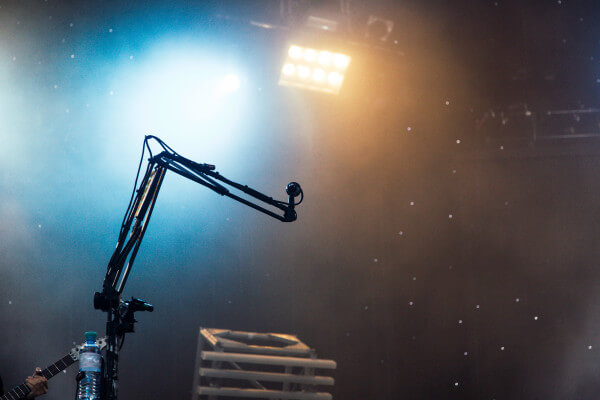Written by Derek Manns, Co-founder & CEO, Stagehand
Recently I have been listening to Dan Carlin’s podcast, Hardcore History. In his series about World War I, Carlin discusses how, for the first time, technology was a major factor in war. In 1914, the technological revolution was already underway and new inventions like aircraft, submarines, artillery and machine guns played an important and devastating role. Militaries that relied on old technology and paradigms often paid a terrible price.
The same thing is happening today in the local live music industry. Large tech companies have moved in on old cultural paradigms and the local music scene (among other cultural entities) is under attack. If you have any doubt as to how lopsided the battle is, consider that Apple recently spent over $6 Billion on content for their new Apple TV+ offering, Amazon, who owns Prime Video, is valued at $1.5 Trillion, and Netflix, which focuses exclusively on developing and streaming content, is a $200 Billion dollar company. All of this programming is competing for our time and attention and it is all coming at us from multiple angles including the smartphones that most of us carry 24/7. How can a local independent club possibly compete? At best the local music club represents a valiant guerilla fighter who wins a few battles but, with current course and speed will ultimately lose the war.
But here is the good news:
Abundance of supply
Every city has an abundance of talented and diverse artists. I am not going to debate if today’s music is better than yesterday’s music, but what is undeniably true is that today’s technology has enabled more artists than ever before to create and distribute their music. These new artists are eager to perform and even though they may not yet be a household name, they are talented and motivated to succeed.
Local is “in”
In 2020, brand experts say that consumers are looking for “brands that support local authenticity”. Local represents pride in community, shared values, and social cohesion. Local beer, local coffee, and local food are all trending and now it is time for local music to take centre stage. Better still, buying close to home provides the opportunity to avoid the middleman and disintermediation puts more money directly in the pockets of the creators.
Technology can help
Platforms like Airbnb have shown that anyone with a room to rent can compete with the hotel industry and Uber has done the same to the taxi industry. Airbnb and Uber provide the platform that organizes the masses and provides consistency and confidence to consumers. The local music industry needs the same thing. Individually, your local live music club may not be able to compete with Netflix, but collectively they can! If all the local music clubs leverage and promote local talent in a consistent way, they can level the playing field.
Pragmatically, getting an industry including independent businesses to work together is difficult. I often use the analogy of plumbing when I talk about the infrastructure required to support the local music industry. Imagine if you lived in a country where there was no central plumbing. To get water, you would need to dig your own well. That is what it is like for the local music scene today. Even though we are all drawing talent from the same source, everyone has their own infrastructure for finding, contracting, promoting, and paying artists. Imagine if hiring a musician was as easy as turning on the tap. If there was open, efficient, cost-effective, and reliable infrastructure, why would anyone go through the trouble of drilling and maintaining their own well?
From need comes innovation
The pandemic has put 96 per cent of live music venues on the edge of bankruptcy and this is forcing the industry to adapt. What if we emerged from the pandemic with “pipe in the ground” and anyone that wanted to tap into the live music infrastructure could easily get connected? Traditional music venues would be more efficient allowing them to focus on their product and their customers rather than administrative tasks. Non-traditional music venues like Airports and microbreweries can improve their customer experience and create new opportunities for artists. The general public will know where to find live music and have greater confidence in the product that is being presented.
The COVID-19 pandemic is another blow to an industry that was already struggling... but live music is not going away. It will continue to find its way, but it could really use some enabling technology of its own.
At Stagehand, we are optimistic about the future of the local live music industry. We are a technology company that is building reusable infrastructure for the arts. We are celebrating local musicians and venues. We are innovating on ways that live music can create unique experiences.
Download this post: Stagehand_-_Live_Music_In_A_New_Era.pdf

